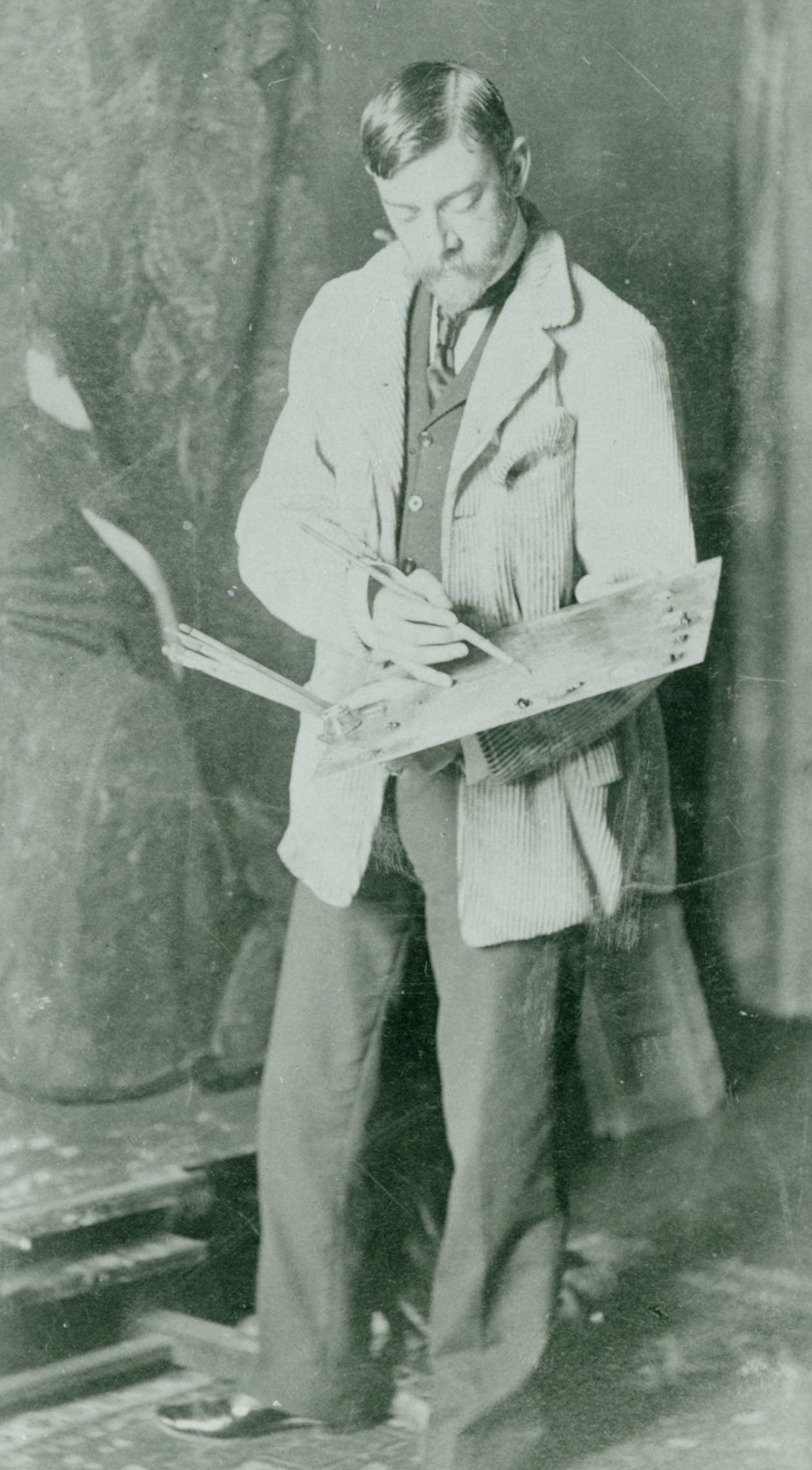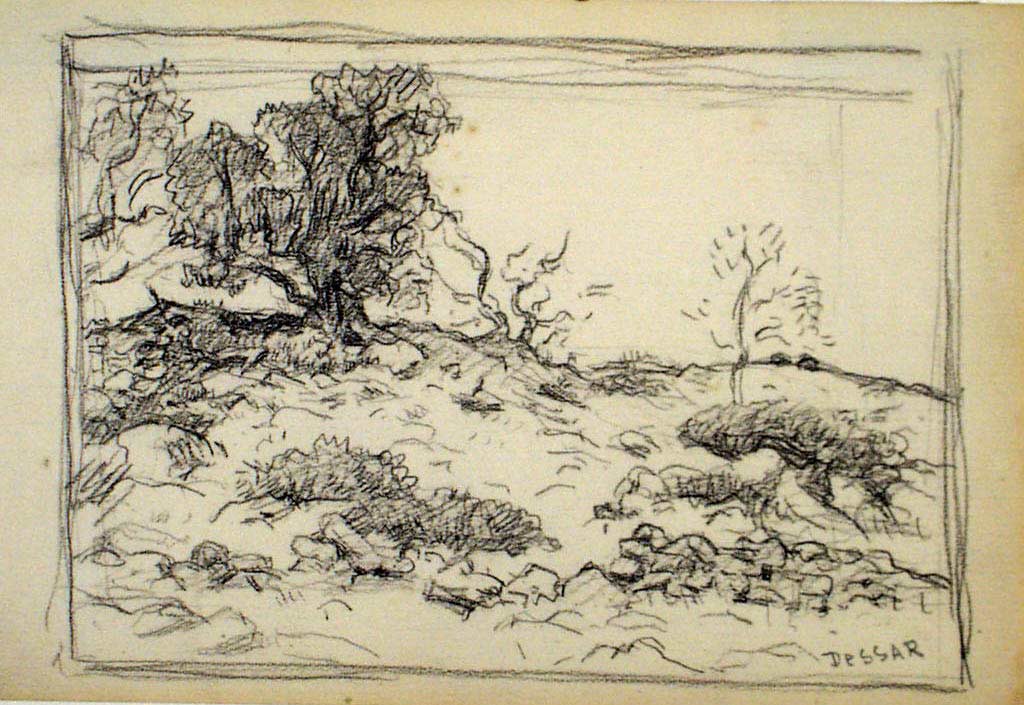Collections
In Situ: The Painted Panel
- Museum Hours: Tuesday through Sunday, 10am to 5pm.
Louis Paul Dessar (1867 – 1952)
Autumn Landscape
Louis Paul Dessar was one of the Tonalist painters who came to Old Lyme with Henry Ward Ranger in the summer of 1900 to establish an American Barbizon, a place for artists who emulated the realistic but poetic rural landscapes that artists painted in the French village of Barbizon in the 1830s. Many late 19th-century American artists loved this art, which they often painted in grayed or toned-down colors. Their paintings were meant to prompt emotion and meditation about land, water, sky, and the meaning of life.
Dessar treats this door like a medieval diptych or a Japanese woodblock print, where two panels are meant to be seen as one picture, although each can be enjoyed for itself as well.
More characteristic of Japanese prints than a religious diptych is the asymmetry of this composition as a whole. The large tree and the small one are both in the center of their panels, but, when seen in a single picture, one dominates the other. The smaller tree even seems further back. A viewer may indulge in imagining what is “painted” behind the strip of wood that blocks the middle of the view, where, in a more traditional painting, the focal point would be. Is it the pond – or the light in the sky – or something else? In any case, the muted colors, limited to a few and muted with gray, are similar on both panels and help to unify this door painting.
Louis Paul Dessar (1867-1952)
Autumn Landscape Oil on wood door panels
Gift of the Artist
Dessar, who had portrayed peasants and fishermen while studying in France in the 1880s, was called the “Millet of America,” an allusion to Jean Francois Millet (1814-1875), the French Barbizon painter famous for images of toiling peasants.
In 1901 Dessar purchased a 600-acre farm on Becket Hill in the neighboring town of Lyme. To provide himself with ready subjects, he stocked it with sheep and oxen. Like Ranger, Dessar found the New England landscape – and the New England farmer – to be subjects rich with possibility.





